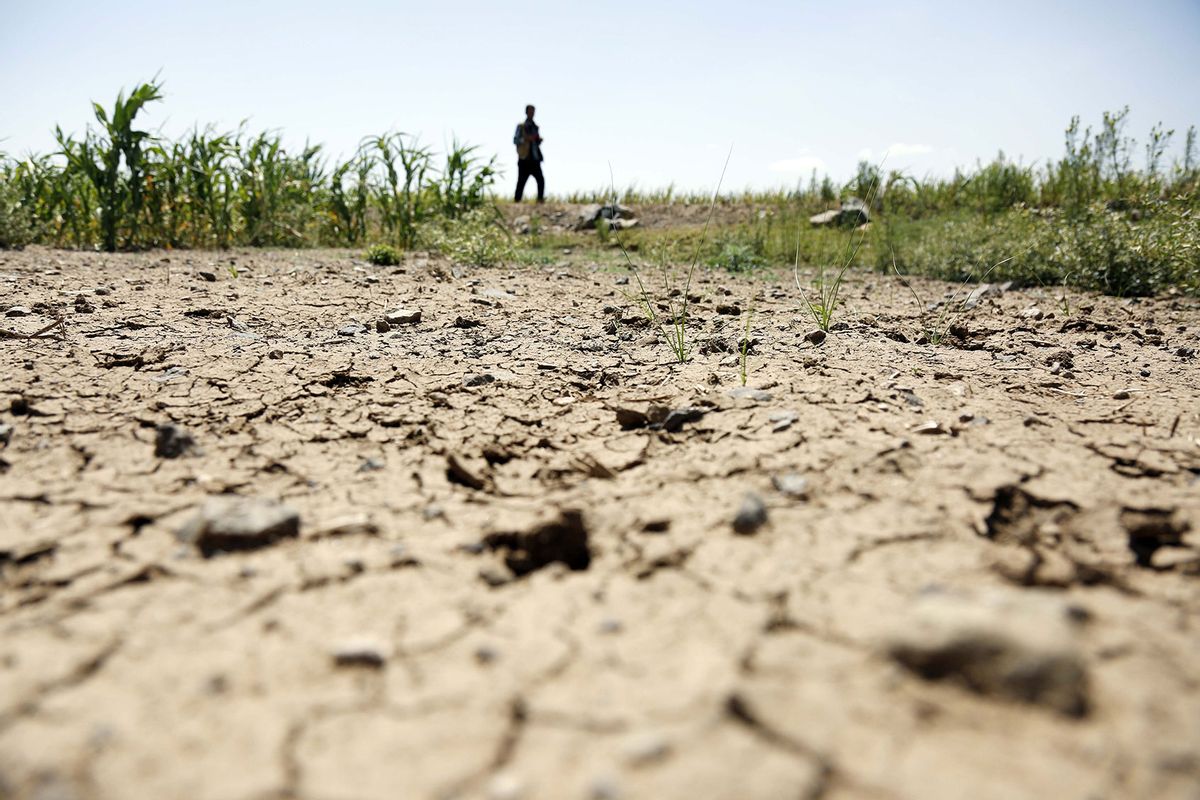2023 proved that climate change isn’t coming — it’s here, and things are spiraling out of control

Politicians often speak of climate change as a problem for future generations to solve, but many scientists say the time to act is now and that the climate has already changed — it’s not a far-off scenario. Never before has the devastation of global heating been more clear than in 2023, which is the hottest year in recorded human history.
But if this trend continues, 2023 may be one of the coolest years in recent memory. In other words, things are poised to get a whole lot worse unless we change our relationship with fossil fuels. In the meantime, we can expect the pile of broken records to climb even higher. Here are some of the main ways 2023 became a defining year in our anthropogenic spiral to the bottom, but with our constantly shifting baselines, it’s not likely to be an anomaly.
Summer 2023 was the hottest summer on record.
When United Nations (UN) Secretary General Antonio Guterres told the world in September that summer 2023 had been the hottest summer in recorded history, he did so in unmistakably vivid and dramatic language.
“Our planet has just endured a season of simmering — the hottest summer on record. Climate breakdown has begun,” Guterres declared, later adding that “the dog days of summer are not just barking, they are biting.”
The year “will see a new global surface temperature record” which “underscores the fact that the planet is continuing to warm as we continue to burn fossil fuels and generate carbon pollution.”
Indeed, according to the World Meteorological Organization (WMO), the period of June through August 2023 had an average global temperature of roughly 16.77°C (62.19°F), which was an increase of 0.66°C (33.19°F) from the normal average.
This extreme heat isn’t just miserable, it can be very deadly, triggering what are essentially mass casualty events, while also worsening wildfires, wracking up health care costs and damaging critical infrastructure at a time when people need their AC running at full blast, if they even have it. What’s more, an estimated 90 percent of the human population is expected to suffer through more extreme heat in the coming years.
The world is expected to hit 1.4ºC of warming in 2023
Last month the WMO came out with another dire statistic: The planet’s temperature is scheduled to hit 1.4º Celsius (2.5º Fahrenheit) above preindustrial levels. Additionally the organization’s provisional State of the Global Climate confirms that 2023 will be the hottest year on record (taking the place of 2016).
“Greenhouse gas levels are record high. Global temperatures are record high. Sea level rise is record high. Antarctic sea ice record low,” WMO Secretary General Peterri Taalas said when discussing the report.
This figure is particularly troubling because experts believe that once the Earth warms by 1.5º degrees Celsius, a series of irreversible feedback loops will ensue, including the collapse of the Atlantic Ocean’s Gulf Stream current and rapid melting from the Arctic and Antarctic to Greenland.
2023 will see a new global surface temperature record
According to the National Oceanic and Atmospheric Administration (NOAA), the average global surface temperature from January through October 2023 was the highest ever recorded in the 174-year-history since these metrics have been measured. Specifically, the global surface temperature during this period hit an astonishing 1.13°C (2.03°F) higher than the 1901–2000 average of 14.1°C (57.4°F). The previous record, set during the span of January to October 2016, had been 0.08°C (0.14°F). The National Centers for Environmental Information (NCEI) estimates that there is a greater than 99% chance that 2023 will rank as the warmest year in recorded history.
In the Northern Hemisphere, the January-October 2023 period ranked as the warmest on record with a temperature that was 1.44°C (2.59°F) above average. In the Southern Hemisphere, the January-October 2023 period was also the warmest on record with mean temperatures at 0.81°C (1.46°F) above average.
Want more health and science stories in your inbox? Subscribe to Salon’s weekly newsletter Lab Notes.
“I expect these records to be regularly broken due to the continuing climate change. But I did not expect them to be broken by such large amounts.”
Ocean heat content too will set a new record
When Salon reached out to Dr. Michael E. Mann, a professor of Earth and Environmental Science at the University of Pennsylvania, he listed among the biggest pieces of climate change news in 2023 that the year “will see a new global surface temperature record” which “underscores the fact that the planet is continuing to warm as we continue to burn fossil fuels and generate carbon pollution.”
Mann also pointed to another worrying development — namely that “ocean heat content, which too will set a new record.” He argued that this “is equal in significance, as the warming of the oceans is helping destabilize ice shelves and fuel more powerful hurricanes and tropical cyclones.”
Indeed, according to NOAA, October 2023 was the seventh consecutive month to have record-high monthly global ocean surface temperatures. As far back as August, NASA proclaimed that “the ocean has a fever,” with NASA oceanographer Josh Willis explaining that the two main factors behind the record heights are that “we have an El Niño developing in the Pacific, and that’s on top of long-term global warming that has been pushing ocean temperatures steadily upward almost everywhere for a century.”
Ice melt also took a huge hit
According to the WMO, the extent of Antarctic sea ice hit a record absolute low in 2023, at least in terms of what scientists know since the satellite era began in 1979. Starting in June, the extent of sea ice was at a record low, and the annual maximum in September 2023 was 16.96 million km2, an amount approximately 1.5 million km2 below the average from 1991 to 2020. The authors drew particular attention to Switzerland, where “glaciers have lost around 10% of their remaining volume in the past two years.” Glaciers in North America and elsewhere amidst the European Alps have taken a hit.
“The minimum in global sea ice seen earlier this year emphasizes the larger trend toward melting of ice, warming of the polar regions, and destabilization of ice sheets,” Mann wrote to Salon.
The bottom line: 2023 is on track to be the hottest year on record
As the WMO announced at COP28, the United Nations climate summit in Dubai, 2023 is “virtually certain” to be the hottest year on record once December 31st has come and gone. As Petteri Taalas, the WMO’s Secretary General, explained in Dubai, “It’s a deafening cacophony of broken records.”
The experts who spoke with Salon agree with this assessment.
“The record monthly global mean temperature records this summer are unusual,” Michael Wehner, a senior scientist in the Computational Research Division at the Lawrence Berkeley National Laboratory, told Salon by email. “I expect these records to be regularly broken due to the continuing climate change. But I did not expect them to be broken by such large amounts. So that is scientifically interesting.”
Wehner added, “That being said, I am more concerned about the regular but incremental record breaking global mean temperature we have seen over the last 2 decades or so. That illustrates that we have not slowed climate change.”
Mann echoed that observation.
“The record temperatures of 2023 emphasize how ongoing human-caused warming will continue to combine with natural climate variability — in this case, [weather patterns like] El Niño — to breach ever new thresholds, including increasingly sustained periods of time now where global surface temperatures exceed 1.5º C and brief moments where we even exceed 2º C,” Mann told Salon. “It’s a warning that we will permanently cross those thresholds in a matter of a decade or two if we fail to reduce carbon emissions dramatically in the years ahead.”
Read more
about climate change


